

Investigation of Polar Equations
By
Moni Olubuyide
Investigate the following polar equation:
Let's begin with a = 1, b=1, and k = 1. The result is nothing interesting although it does look like a pear turned on its side.

Let's investigate what happens as we increase k only. This is when k= 2. Notice that we get something different, we have two loops that looks like a figure 8 turned on its side.
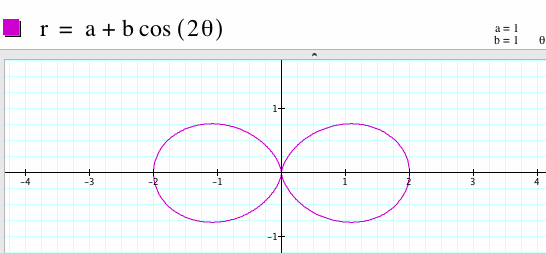
What if k =5? Now we have something that looks like a flower!! It seems as though as we increase k, the number of loops increases accordingly.
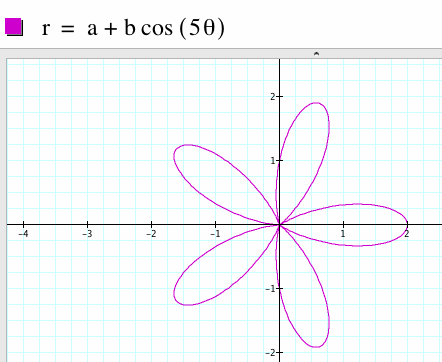
What if k is not a whole number. Let k = 7.5. Notice that we get 7.5 loops.
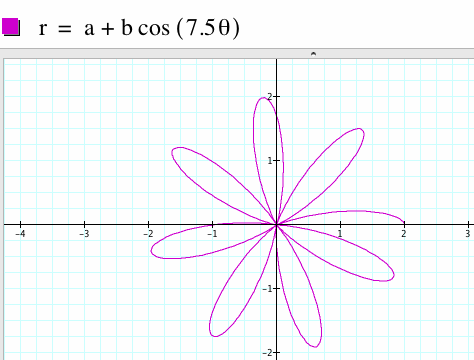
Therefore, when a and b are equal, and k is an integer, this is called the " n-leaf rose." Click here for animation.
Now, let's change the values of a and b. Let a=3, b= 3and k=2
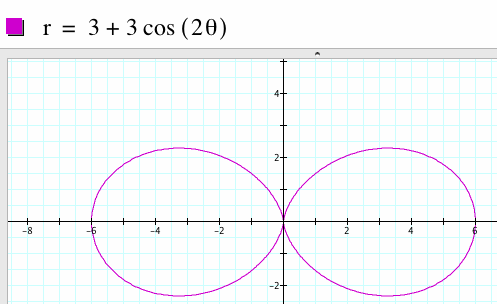
It looks as though changing this cause the leaves to intersect the x-axis at (a+b, 0) and (-a+-b, 0). When k is even there are two intercepts and when k is odd there is only one intercept!!
This is a graph of when a=3, b=3, and k=4. Notice there are 4 leaves and the x-intercepts remain the same but now the figure is always symmetrical about the y-axis with the y-intercepts of (0, a+b) and (0, -a+-b). This seems to occur at 4k....

Now let's investigate what happens when a < b .....
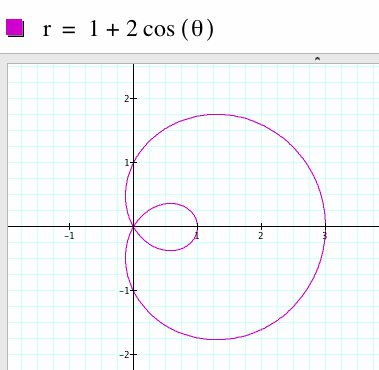
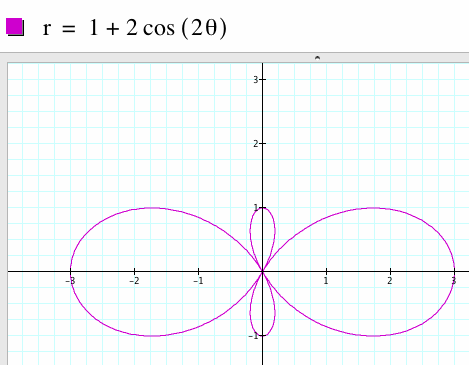
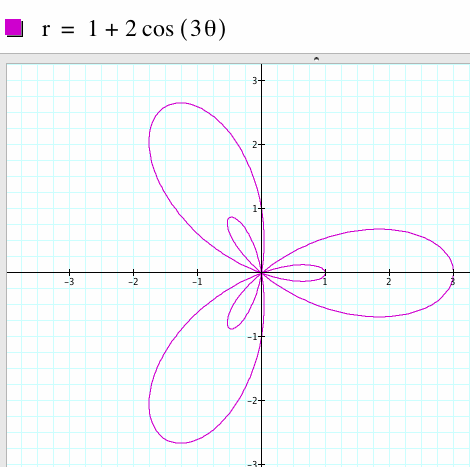
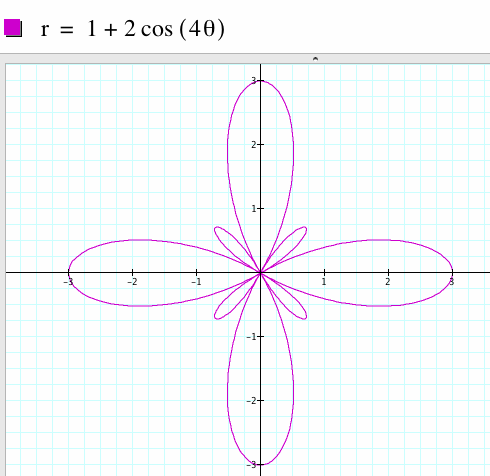
Conclusion: When a < b, we get two different n-leaf graphs. With odd values of k, then you see k-leaves inside the original leaves. When k is even, then you have small k-leaves between each of the original leaves!!
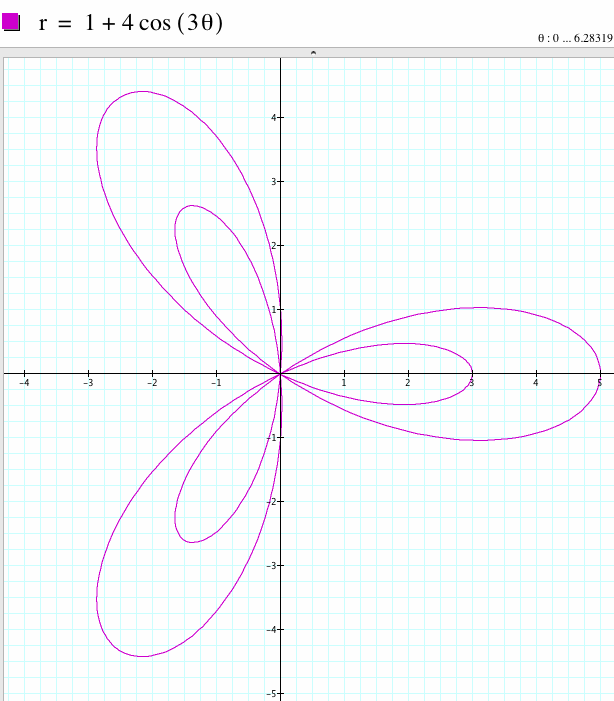
Increasing the value of b then increases the size of the leaves....notice the intercept rule still holds...
Now lets investigate when a > b .....
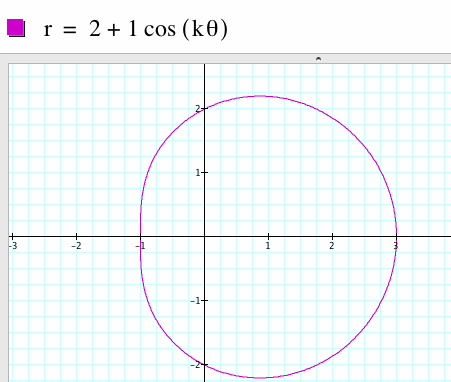
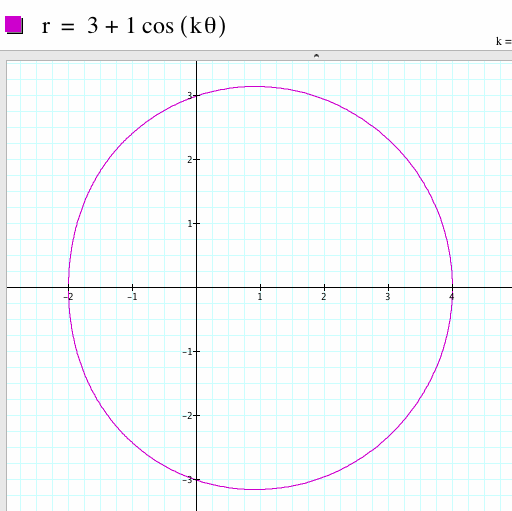
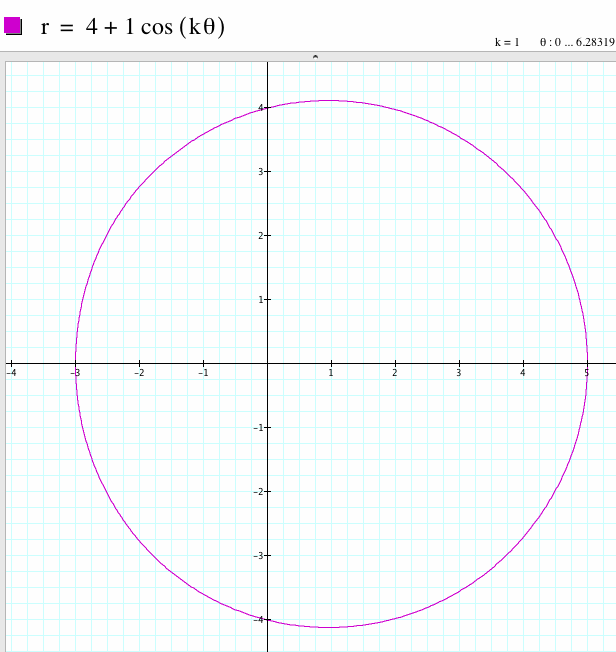
Keeping b and k constant at one..you can see that as we increase a the the figure begins to form a circle. If you look closely you can also see that the radius of the circle is the value of a.
let's see what happens as we increase k and we keep a=2 and b=1....
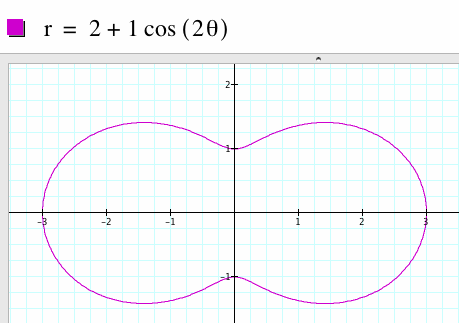
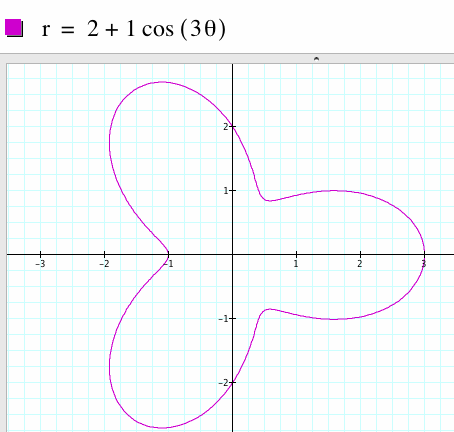
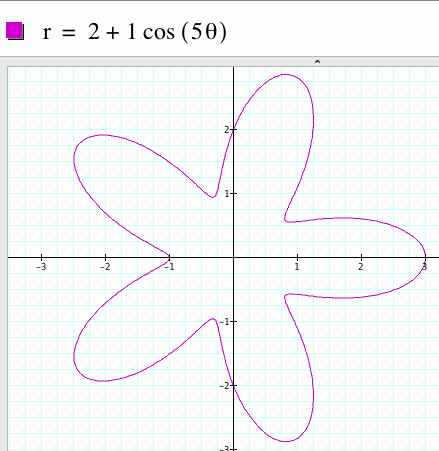
Interestingly, the loops no longer intercept and the origin. When a=2, b=1 and k=2 you get a figure that looks like a peanut. When k= 5, you get something that looks like a starfish.
What about when we change the equation to .....
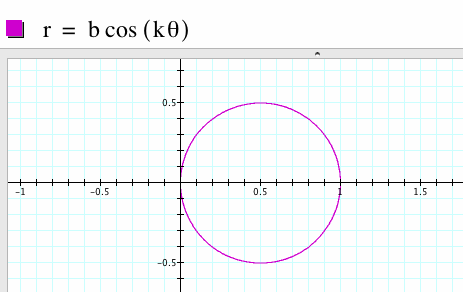
Looks like a circle....
Let's keep b constant and change the value of k....
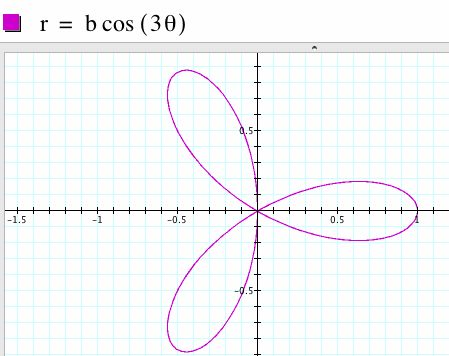
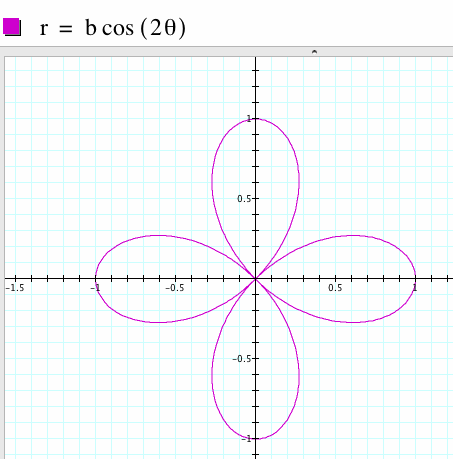
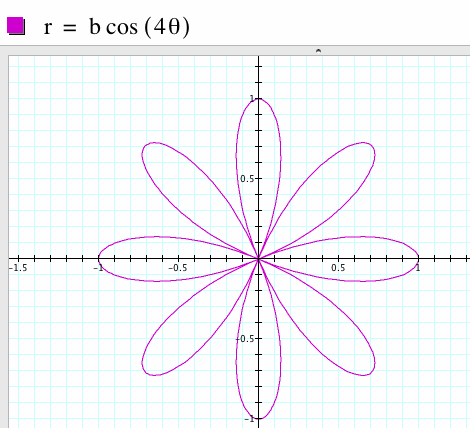
Notice now that when k is odd there is one x-intercept at (b, 0) and the figure is symmetrical about the x-axis. When k is even there are two x-intercepts and y-intercepts and the figure is symmetrical about the x- & y-axis. The intercepts are at (b, 0), (-b, 0), (0, b), and (0, -b). Moreover, when k is odd, then you see k-leaves otherwise when k is even there are 2k-leaves....
What happens when we increase b...
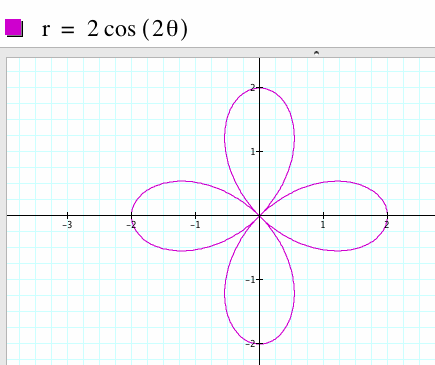
Then the leaves get longer and the intercepts remain at the value of b.
What if we replaced cos with sin?....
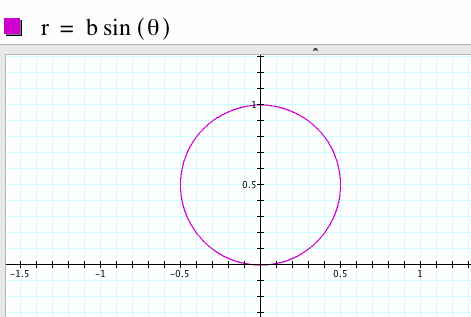
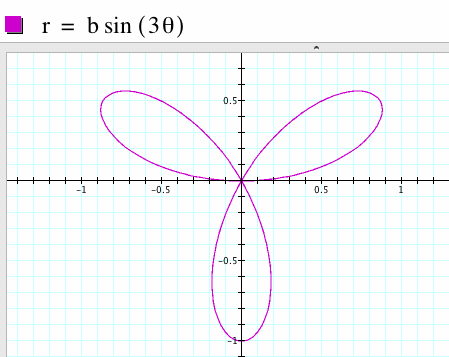
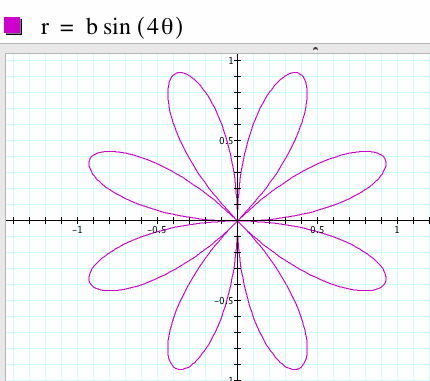
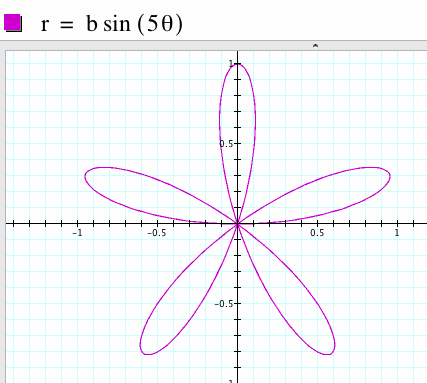
Keep b constant while increasing k, you can see that the graphs rotated 90 degrees when compared to the cosine graphs. This isn't much of a surprise because of the relationship between sine and cosine. Notice the lines of symmetry remains the same and for odd values of k the intercept is now on the y-axis at (0, b). For even values of k, there are no longer x or y intercepts....
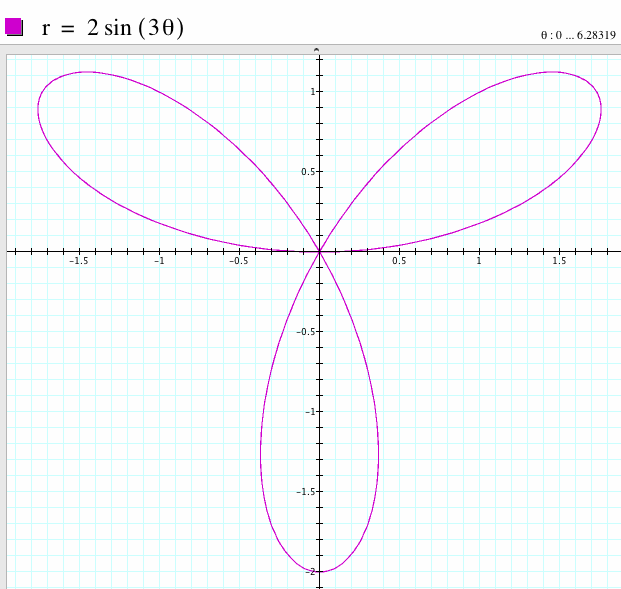
If we increase b, notice that the leaves become longer....